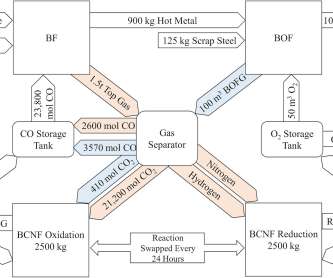Novel adaptation for existing blast furnaces could reduce steelmaking emissions by 88%; closed-loop carbon recycling
Green Car Congress
JANUARY 26, 2023
Researchers from the University of Birmingham have designed a novel adaptation for existing blast furnaces that could reduce CO 2 emissions from the steelmaking industry by nearly 90%. If implemented in the UK alone, the system could deliver cost savings of £1.28 billion in 5 years while reducing overall UK emissions by 2.9%.



































Let's personalize your content